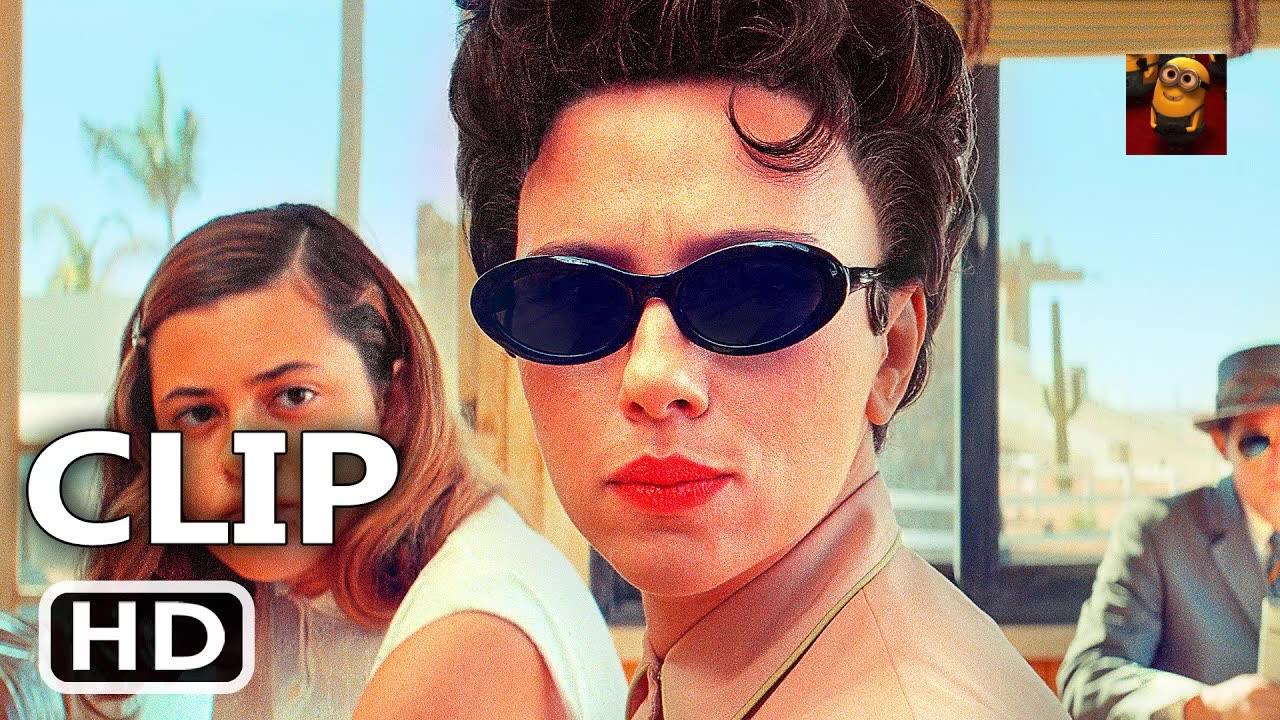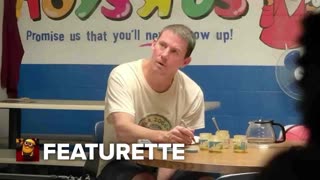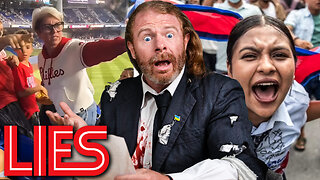Premium Only Content

ASTEROID CITY _You Took a Picture of Me__ Clip (2023) Scarlett Johansson, Wes Anderson
ASTEROID CITY _You Took a Picture of Me__ Clip (2023) Scarlett Johansson, Wes Anderson
ASTEROID CITY "You Took a Picture of Me?" Clip (2023) Scarlett Johansson, Wes Anderson
© 2023 - Universal Pictures
Alissa Wilkinson covers film and culture for Vox. Alissa is a member of the New York Film Critics Circle and the National Society of Film Critics.
Nuclear bombs keep going off over the horizon of Asteroid City (population 87). “Another atom bomb test,” the characters declare, with some combination of intrigue and boredom. They trot out of the diner to look at the tiny mushroom cloud, snap a few pictures, and go back inside for more coffee. It’s 1955. This isn’t unusual anymore.
Living in the shadow of the bombs is what Wes Anderson’s Asteroid City is about — literal bombs, and also a host of other life-shattering things like loss, and existential dread, and a world changing so fast it’s hard to hang on to it. Real things, in other words, the kind everyone has to deal with. The emotions we can’t outrun, but we try to anyhow.
That Anderson set Asteroid City in 1955 is a bit of trickery, a degree of separation between the characters’ reality and our own. We live in (dare I say) uniquely frightening times, but so do these people, for whom the Cold War and a rapidly changing social order is their psychic wallpaper. Much of the movie is specifically set in September 1955, a month bookended by two events: the United States’ decision to embark on Project Vanguard, which would try unsuccessfully to beat the Soviets at putting a satellite into space; and the tragic car accident that took the life of James Dean, the iconic actor who embodied the rising rebellion of the youth. (I don’t think it’s an accident that a cop car in hot pursuit of a careening vehicle keeps rushing through the town’s one intersection.)
“If you wanted to live a nice, quiet, peaceful life, you picked the wrong time to get born,” General Gibson (Jeffrey Wright) exhorts a crowd of teenagers and their parents, assembled in Asteroid City to celebrate the landing of a meteorite there thousands of years earlier. The children have entered their wildly advanced science experiments in a contest, which the military plans to snap up; the space race is in their eyes. Later, when things go south, youths are interrogated in a manner suspiciously reminiscent of the House Un-American Activities Committee. Grown men fight, and others try to calm them down by reminding them, “We’re not in Guadalcanal anymore.”
It feels reminiscent of something real, but this is also all fiction — as the movie’s narrator puts it, “an apocryphal fabrication.” Fiction puts a layer between us and real history, a way of looking at the past through different eyes. It has another function, too: Through fiction, we process our emotions by proxy, whether we’re the artists or the audience.
That’s the subject of Asteroid City, which nests fiction inside of fiction inside of fiction. (I promise it’s easier to watch than it sounds.) Here is the most succinct description of the levels of its made-up-ness: It is a scripted movie that pretends to be a TV show in which actors stage a fictionalized version of the making of a play telling the fictional story of a place that doesn’t exist. We also see the play, but it is shot like a movie. (I am Alice, tumbling down the rabbit hole.)
-
 1:46
1:46
movies trailer
3 hours agoRoofman Featurette - Story (2025)
12 -
 LIVE
LIVE
MattMorseTV
2 hours ago $3.40 earned🔴Trump’s Oval Office PROCLAMATION. 🔴
1,185 watching -
 0:31
0:31
Danny Rayes
1 day agoThis Company is Cooked 😨
43 -
 LIVE
LIVE
Wayne Allyn Root | WAR Zone
5 hours agoWAR Zone LIVE | 9 SEPTEMBER 2025
46 watching -
 1:14:54
1:14:54
vivafrei
3 hours agoCash for Criminals? Did Judge Wrongly Release Accused Murderer? Epstein Doc Release! Swalwell Sucks!
72.3K21 -
 2:02:47
2:02:47
The Quartering
4 hours agoToday's Breaking News! Greta FAKES Drone Attack, Animal Cruelty Spike & Cracker Barrel
92.4K32 -
 1:15:17
1:15:17
Awaken With JP
4 hours agoKaren Strikes Again, There is No Crime, Communism Succeeds! - LIES Ep 107
39.2K17 -
 39:11
39:11
Stephen Gardner
2 hours ago🔥Trump TAKES ACTION as Democrats ABANDON Party!
19.1K13 -
 11:37
11:37
Robbi On The Record
12 days agoThe Devil is in the Branding..
38.9K19 -
 LIVE
LIVE
LFA TV
11 hours agoLFA TV ALL DAY STREAM - TUESDAY 9/9/25
1,371 watching